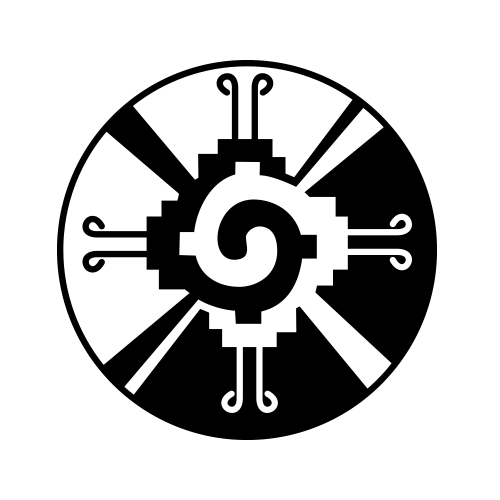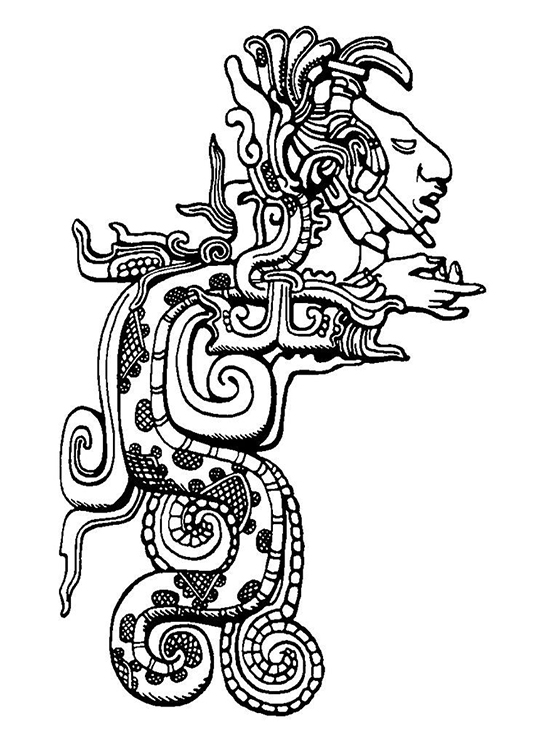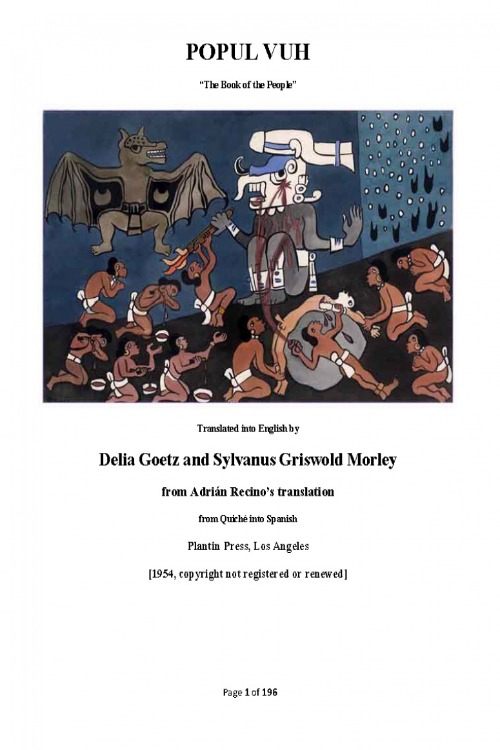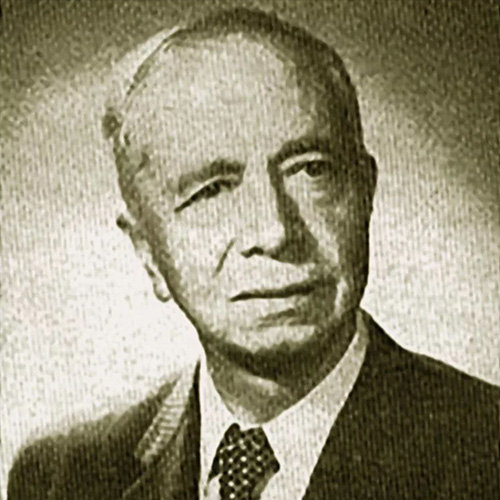About
The Goetz and Morley translation of the Popol Vuh text was the first English translation, completed in 1950. The authors also released the text of the book in 1954 under a non-renewed copyright license. This work lists the major books of the Mayan "Book of the People."
Source: OMNIKA
This is the first complete version in English of the "Book of the People" of the Quiche Maya, the most powerful nation of the Guatemalan highlands in pre-Conquest times and a branch of the ancient Maya, whose remarkable civilization in pre-Columbian America is in many ways comparable to the ancient civilizations of the Mediterranean. Generally regarded as America's oldest book, the Popol Vuh, in fact, corresponds to our Christian Bible, and it is, moreover, the most important of the five pieces of the great library treasures of the Maya that survived the Spanish Conquest. The Popol Vuh was first transcribed in the Quiche language, but in Latin characters, in the middle of the sixteenth century, by some unknown but highly literate Quiche Maya Indian-probably from the oral traditions of his people. This now lost manuscript was copied at the end of the seventeenth century by Father Francisco Ximénez, then parish priest of the village of Santo Tomás Chichicastenango in the highlands of Guatemala, today the most celebrated and best-known Indian town in all of Central America.
The mythology, traditions, cosmogony, and history of the Quiché Maya, including the chronology of their kings down to 1550, are related in simple yet literary style by the Indian chronicler. And Adrian Recinos has made a valuable contribution to the understanding and enjoyment of the document through his thorough going introduction and his identification of places and people in the footnotes.
Source: Author or Publisher
expand_more Read more Read less
Access
External sources
Primary
Myth
Deities first created the world and made humans from clay, then wood. These humans were emotionless and destroyed by the deities in a flood, who turn them into monkeys. Later, the first four people are made and named after the Jaguar animal.
Belief system

Mayan religion refers to the spiritual beliefs and customs of some indigenous people from Mesoamerica, mainly Mexico and Guatemala.
Deity

Kukulkan was one of the main deities in Mayan religion and traditionally depicted as a feathered serpent. A pyramid at Chichen Itza, Mexico, is devoted to Kukulkan.
Translation

"Popol Vuh" is a partial English translation of the Popul Vuh creation and flood myth. It was released in 1954 by Delia Goetz and Sylvanus G. Morley, and, with the help of Spanish editor Adrián Recinos. It contains text of the first English translation of the myth (it was first published as a book in 1950, cf. bibliography). This text portion was seemingly released in the public domain due to no copyright being registered or renewed.
Myths cited
It looks like only the main myth was referenced in this work.
Belief systems cited
It looks like only the main belief system was referenced in this work.
Artifacts cited
Contributor
Cite this work
ChicagoGoetz, Delia, and Sylvanus G. Morley, trans. Popol Vuh: The Sacred Book of the Ancient Quiché Maya. Edited by Adrián Recinos. Norman, OK: University of Oklahoma Press, 1950.








